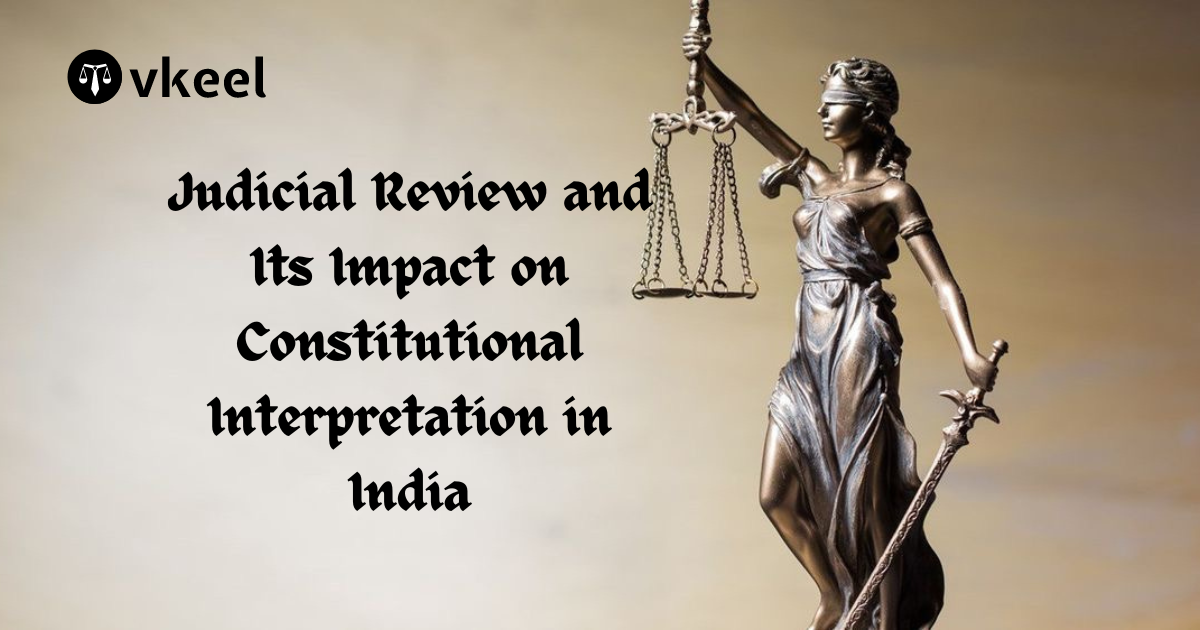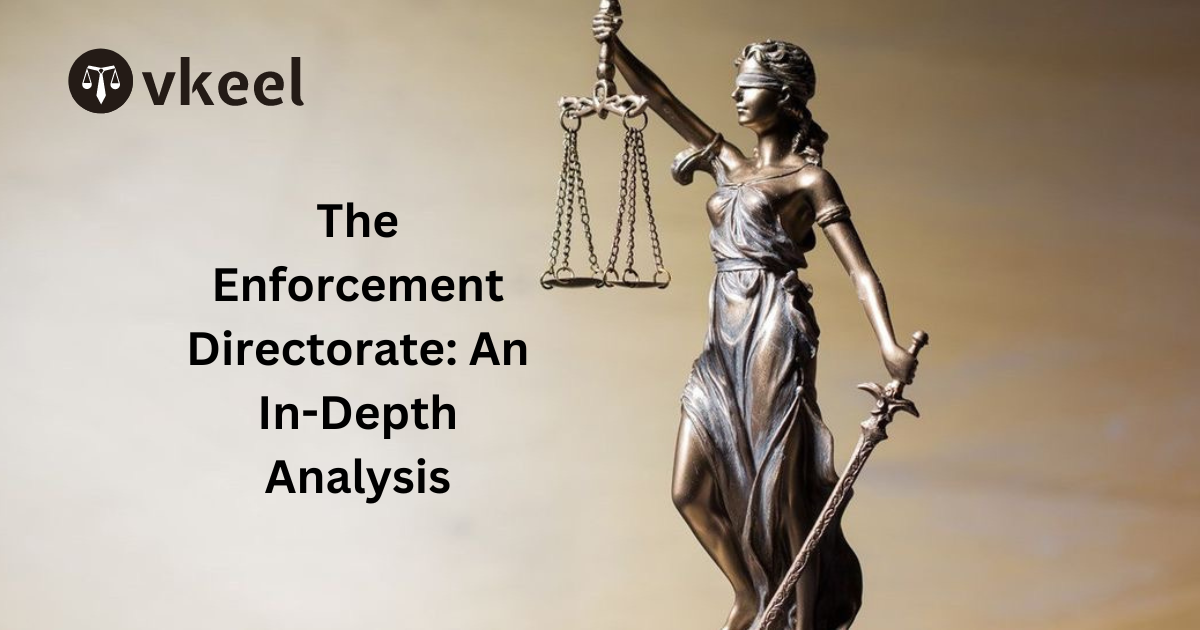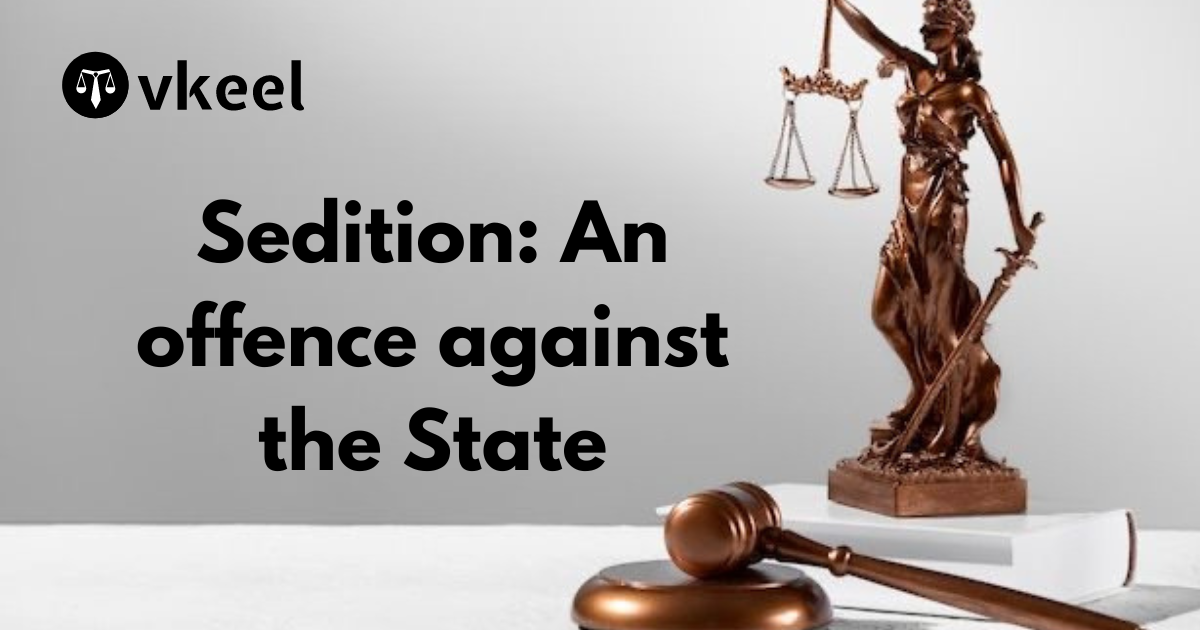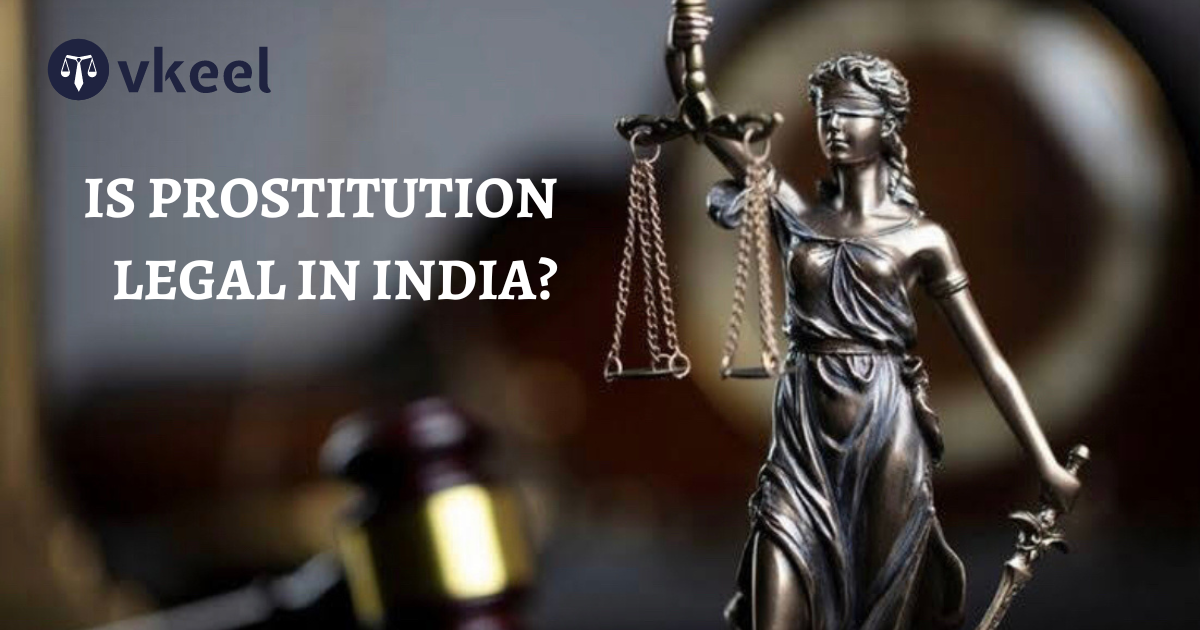Judicial Review and Its Impact on Constitutional Interpretation in India
By Himanshu Kumar
Table of Contents
Introduction
Judicial Review is the power of the judiciary to examine and determine the constitutionality of actions taken by the legislative and executive branches of government. In India, this power is enshrined in the Constitution and serves as a vital mechanism for maintaining the rule of law and protecting the rights and freedoms guaranteed to citizens. The Hon’ble Supreme Court of India, as the apex judicial body, plays a crucial role in interpreting the Constitution, ensuring that all laws and executive actions align with constitutional provisions. Over the years, judicial review has significantly influenced constitutional interpretation in India, shaping the country’s legal and political landscape.
The primary reason for judicial review in India is to ensure that the actions of the legislature and executive are in accordance with the Constitution. Judicial review acts as a safeguard against the arbitrary use of power by these branches of government, ensuring that laws and executive decisions do not violate the fundamental rights of citizens or undermine the basic principles enshrined in the Constitution. This power of the judiciary, particularly vested in the Supreme Court and High Courts, serves as a check on the other branches of government, maintaining the supremacy of the Constitution and protecting democratic governance.
The impact of judicial review on constitutional interpretation in India has been profound, leading to the development of key doctrines such as the Basic Structure Doctrine, which prevents Parliament from altering the essential features of the Constitution. Judicial review has also expanded the scope of fundamental rights, adapted the Constitution to changing social and political contexts, and reinforced the rule of law. Through landmark judgments, the judiciary has not only protected individual rights but also shaped the legal and political landscape of the country, ensuring that the Constitution remains a living document that evolves with the times.
Constitutional Basis of Judicial Review
The concept of judicial review in India is rooted in several key provisions of the Constitution:
- Article 13: This article declares that any law inconsistent with or in derogation of the fundamental rights shall be void. It empowers the courts to invalidate laws that violate fundamental rights.
- Article 32 and Article 226: These articles provide the right to constitutional remedies, allowing citizens to approach the Supreme Court and High Courts, respectively, for the enforcement of their fundamental rights. Through these provisions, the courts exercise their power of judicial review.
- Article 131-136: These articles grant the Supreme Court the authority to hear various types of cases, including appeals, special leave petitions, and disputes between states or between states and the central government. This broad jurisdiction enables the Supreme Court to review the constitutionality of legislative and executive actions.
- Article 372: This article allows for the continuation of pre-Constitution laws, subject to their conformity with the Constitution. This implies that laws in force before the Constitution can be reviewed for constitutionality.
Historical Evolution of Judicial Review in India
The concept of judicial review was influenced by the British legal system, which India inherited during colonial rule. However, the framers of the Indian Constitution were also inspired by the American model, where judicial review is a well-established principle. The evolution of judicial review in India can be traced through several landmark cases and constitutional amendments.
1. Early Years: The Shankari Prasad Case (1951)
One of the earliest cases to address the scope of judicial review was Shankari Prasad Singh Deo v. Union of India (1951). The case challenged the validity of the First Amendment to the Constitution, which curtailed the right to property. The Supreme Court, in this case, held that Parliament had the power to amend any part of the Constitution, including fundamental rights. The Court reasoned that since Article 368 (which deals with constitutional amendments) was itself a provision of the Constitution, it was subject to the same amendment procedure as other parts.
2. The Golaknath Case (1967)
The ruling in Golaknath v. State of Punjab (1967) marked a significant shift in the interpretation of the Constitution. In this case, the Supreme Court held that Parliament could not amend fundamental rights. The Court applied the doctrine of prospective overruling, declaring that any constitutional amendment infringing on fundamental rights would be void, but this would apply only to future amendments.
This decision sparked a debate over the balance of power between the judiciary and the legislature, leading to subsequent constitutional amendments aimed at curbing judicial review.
3. The Basic Structure Doctrine: Kesavananda Bharati Case (1973)
The Kesavananda Bharati v. State of Kerala (1973) case is perhaps the most significant in the history of judicial review in India. The case arose from a challenge to the 24th, 25th, and 29th Amendments, which sought to assert parliamentary supremacy in matters of constitutional amendments. The Supreme Court, in a 7-6 decision, upheld the power of Parliament to amend the Constitution but introduced the Basic Structure Doctrine. The Court held that while Parliament could amend most parts of the Constitution, it could not alter the “basic structure” or essential features of the Constitution.
The Basic Structure Doctrine became a cornerstone of constitutional interpretation in India, ensuring that certain fundamental principles, such as the supremacy of the Constitution, the rule of law, and the separation of powers, remained inviolable. This doctrine has been invoked in numerous cases to strike down amendments and laws that threatened the core values of the Constitution.
4. Post-Emergency Era: The Minerva Mills Case (1980)
The Minerva Mills Ltd. v. Union of India (1980) case further solidified the Basic Structure Doctrine. The case challenged the 42nd Amendment, which sought to reduce the scope of judicial review by making certain laws immune from judicial scrutiny. The Supreme Court held that the amendment violated the basic structure of the Constitution by undermining the balance of power between the judiciary and the legislature.
The Minerva Mills judgment reaffirmed the principle that judicial review is an essential feature of the Constitution and that any attempt to curtail it would be unconstitutional.
5. Expanding the Scope of Judicial Review: The Indira Sawhney Case (1992)
The Indira Sawhney v. Union of India (1992), also known as the Mandal Commission case, was a landmark judgment that expanded the scope of judicial review to include issues of social justice and affirmative action. The case dealt with the validity of the reservation policy for Other Backward Classes (OBCs) in government jobs. The Supreme Court upheld the reservation policy but imposed a 50% cap on reservations, emphasizing the need to balance affirmative action with the right to equality.
This case demonstrated how judicial review could be used to ensure that legislative and executive actions aimed at social justice do not violate constitutional principles.
6. Judicial Activism and Public Interest Litigation (PIL)
In the post-Emergency era, the Supreme Court expanded its role through judicial activism, particularly in the realm of Public Interest Litigation (PIL). PILs allowed the court to address issues of public concern, often involving the violation of fundamental rights. The court’s proactive stance in PIL cases, such as Vishaka v. State of Rajasthan (1997), which established guidelines against sexual harassment at the workplace, and Maneka Gandhi v. Union of India (1978), which expanded the interpretation of the right to life and personal liberty, illustrated the transformative potential of judicial review.
Impact of Judicial Review on Constitutional Interpretation
Judicial review has had a profound impact on constitutional interpretation in India, influencing the development of key constitutional doctrines and principles.
- Doctrine of Basic Structure: The Basic Structure Doctrine, established in the Kesavananda Bharati case, is perhaps the most significant contribution of judicial review to constitutional interpretation. This doctrine has served as a bulwark against arbitrary amendments to the Constitution, ensuring that its fundamental principles remain intact.
- Expansion of Fundamental Rights: Judicial review has played a critical role in expanding the scope of fundamental rights. Through cases like Maneka Gandhi v. Union of India and Puttaswamy v. Union of India (2017), which recognized the right to privacy as a fundamental right, the judiciary has broadened the interpretation of rights enshrined in the Constitution.
- Balancing State Power and Individual Rights: Judicial review has been instrumental in maintaining the balance between state power and individual rights. The judiciary has often acted as a check on excessive state power, protecting citizens from arbitrary or unconstitutional actions by the government.
- Strengthening the Rule of Law: By ensuring that all laws and executive actions conform to constitutional principles, judicial review has reinforced the rule of law in India. This has helped build a legal system where the Constitution is the supreme law of the land, and all actions by the state must be justified within its framework.
- Promotion of Social Justice: Judicial review has also been a tool for promoting social justice in India. The Supreme Court’s interventions in cases related to affirmative action, environmental protection, and the rights of marginalized communities have shaped policies and laws that aim to create a more equitable society.
Challenges and Criticisms
While judicial review has been a powerful tool for upholding the Constitution, it has also faced criticism and challenges.
- Judicial Overreach: Critics argue that the judiciary, at times, has overstepped its boundaries, encroaching on the powers of the legislature and executive. The term “judicial overreach” is often used to describe instances where courts have made decisions on matters that are traditionally within the domain of the other branches of government.
- Inconsistency in Decisions: There have been instances where the Supreme Court’s decisions on similar issues have been inconsistent, leading to confusion and uncertainty in the law. This inconsistency can undermine the credibility of judicial review.
- Delay in Justice: The judiciary in India is burdened with a large number of pending cases, which can lead to delays in the exercise of judicial review. This delay can affect the timely enforcement of fundamental rights and the delivery of justice.
- Political Influence: There have been concerns about the potential for political influence over judicial appointments and decisions. Ensuring the independence of the judiciary is crucial for the effective exercise of judicial review.
Conclusion
Judicial review is a cornerstone of constitutional governance in India. It has played a pivotal role in protecting fundamental rights, maintaining the balance of power between different branches of government, and ensuring that all laws and executive actions conform to constitutional principles. Through landmark judgments and the development of doctrines like the Basic Structure Doctrine, the judiciary has shaped the interpretation of the Constitution in ways that have had a lasting impact on Indian society.
However, the power of judicial review must be exercised with caution to avoid overreach and ensure consistency in decision-making. As India continues to evolve, judicial review will remain an essential mechanism for upholding the rule of law and ensuring that the Constitution remains a living document that adapts to the changing needs and aspirations of its people
Disclaimer:
The information provided in the article is for general informational purposes only, and is not intended to constitute legal advice or to be relied upon as a substitute for legal advice. Furthermore, any information contained in the article is not guaranteed to be current, complete or accurate. If you require legal advice or representation, you should contact an attorney or law firm directly. We are not responsible for any damages resulting from any reliance on the content of this website.








